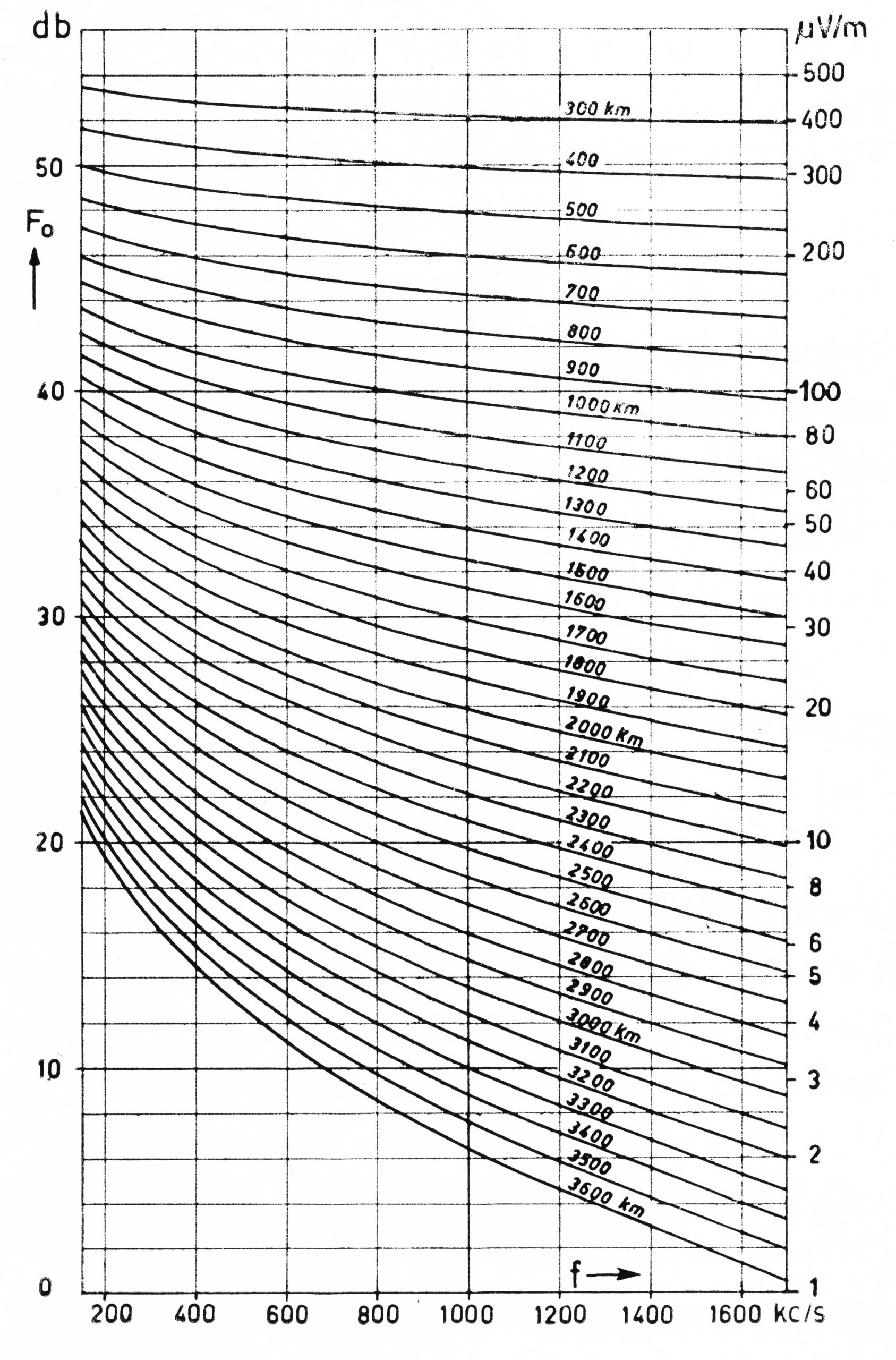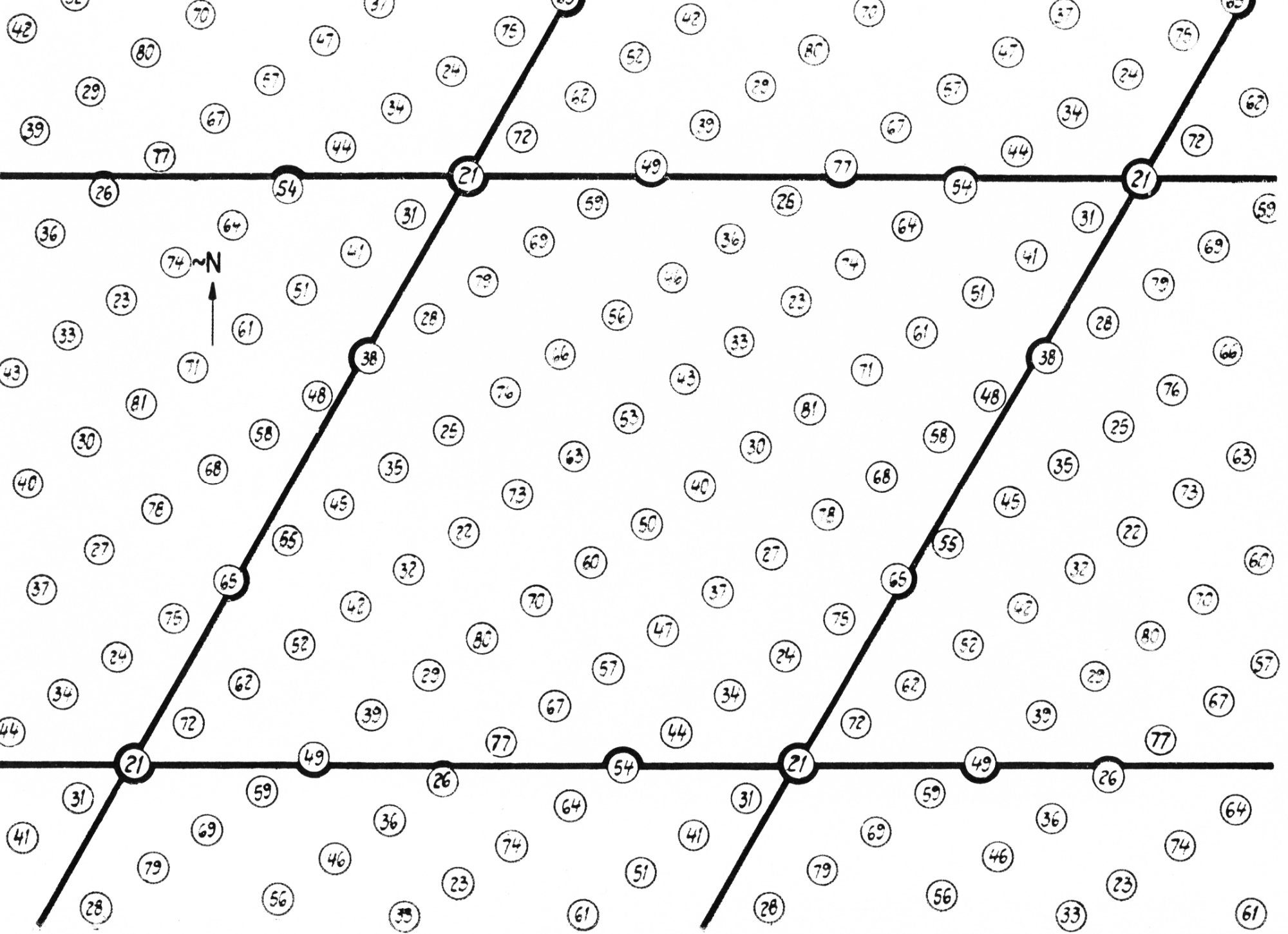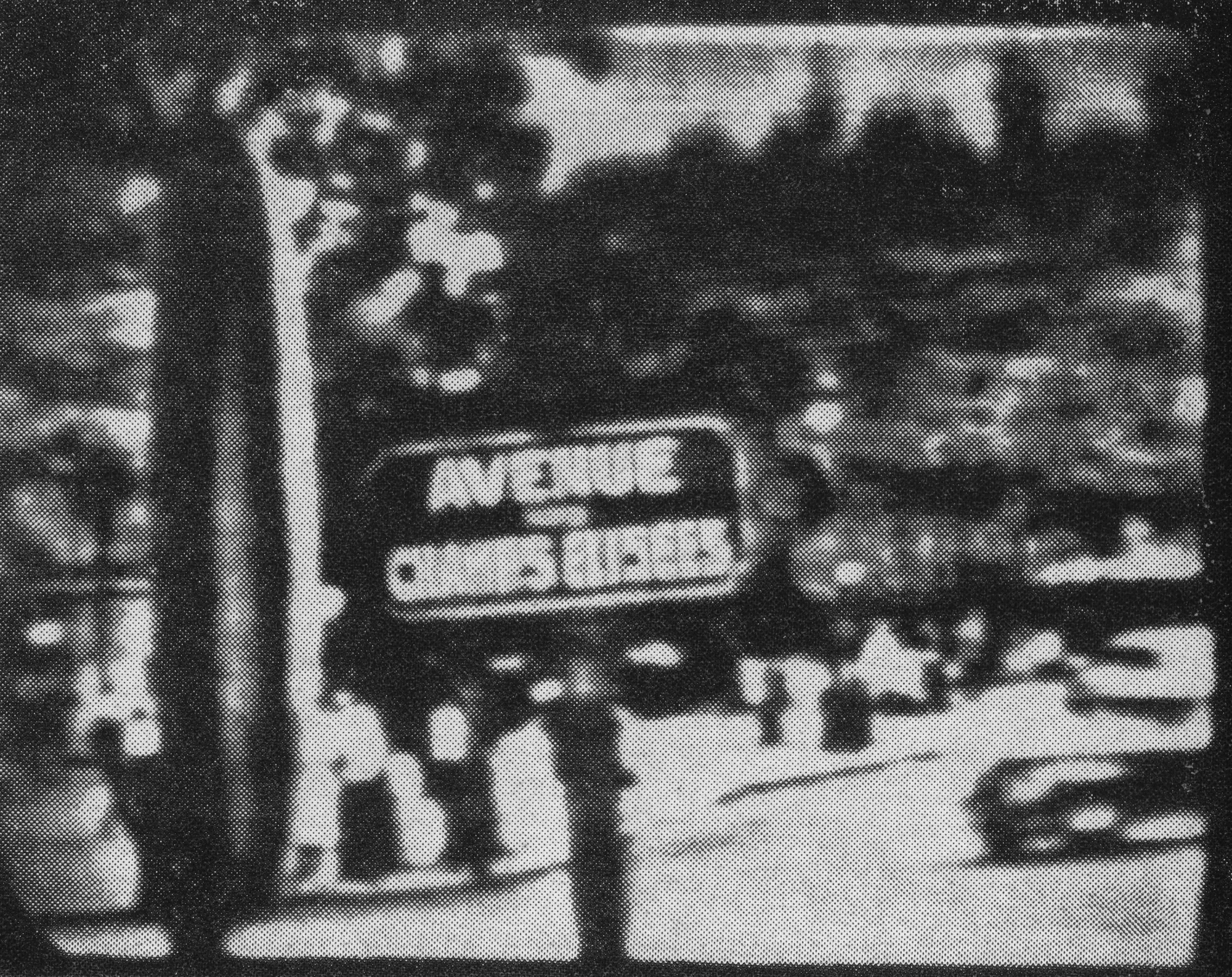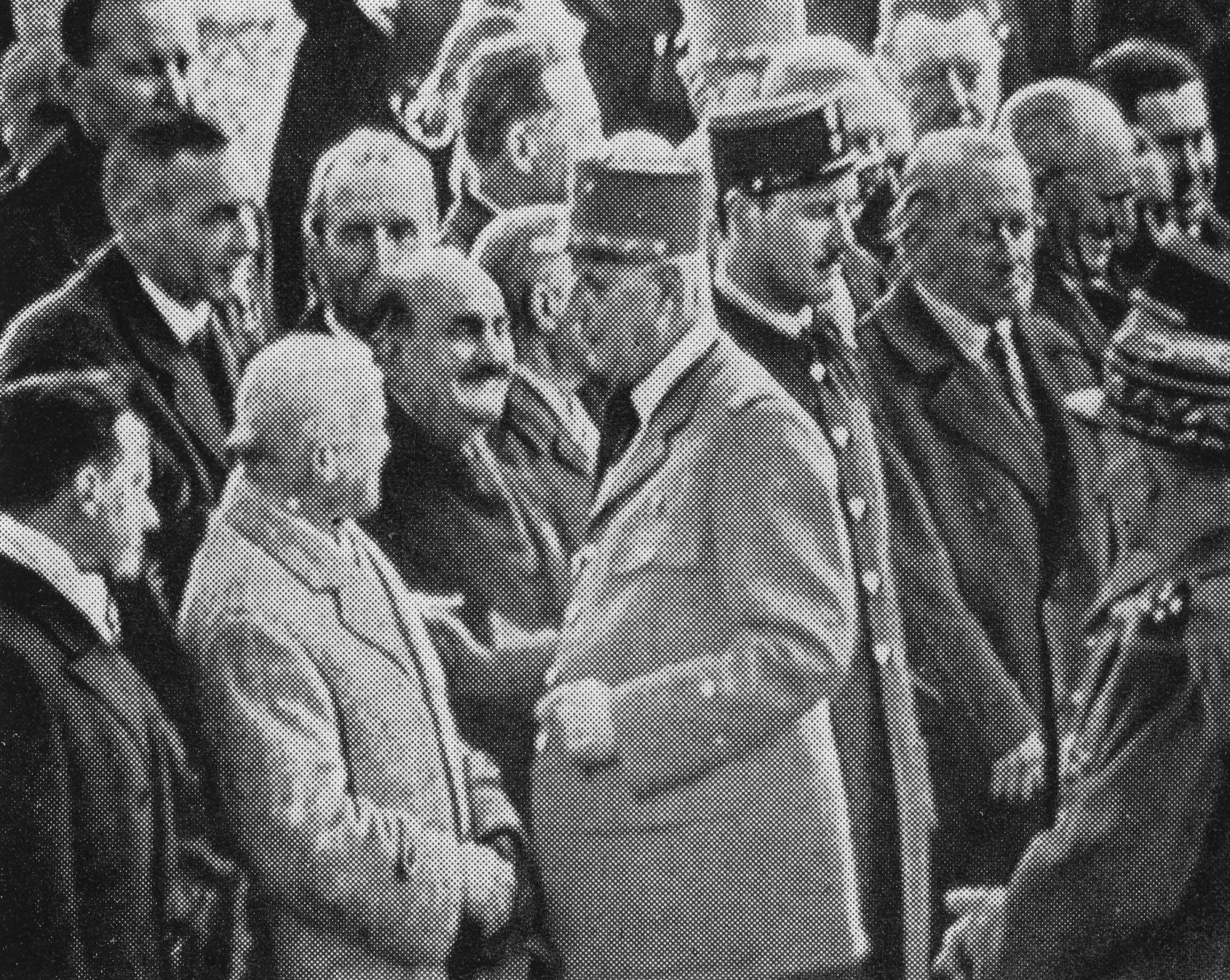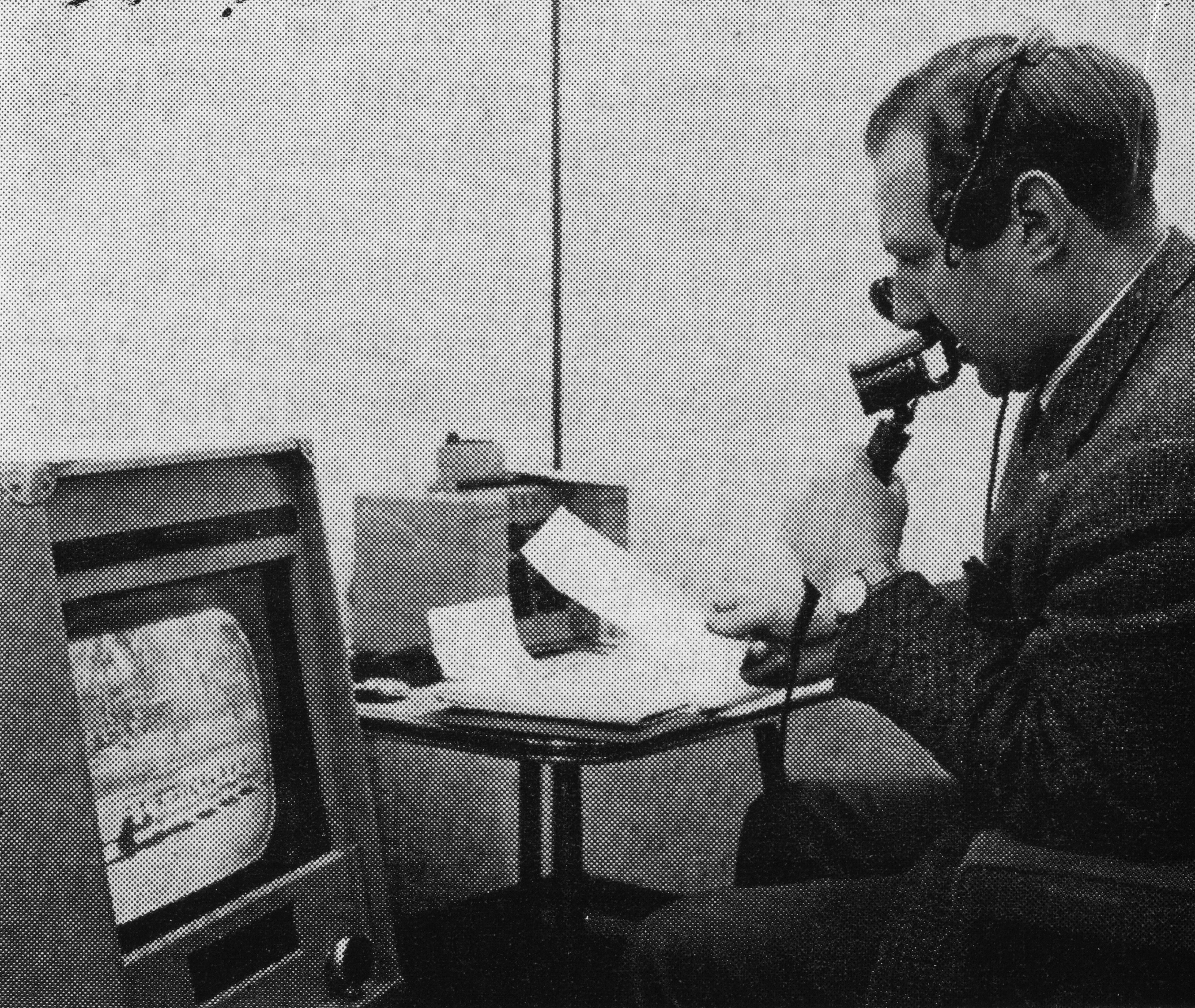Activities in the
Technical field
Sound and television broadcasting are, then, in a sense newcomers among the mass media and their technical development has not yet reached finality. As we have seen, VHF/FM services, colour television and stereophonic broadcasting have been introduced during the past ten years, but there are other technical innovations, the importance of which is obvious only to the specialist. Let us mention as an example those new terms that have enriched (or perhaps we should say, impoverished) our language during past years: transistor, klystron, vidicon and so on. These inventions, which fill the engineer with enthusiasm may well offer interesting possibilities for improving broadcasting or for extending the field of its action, but they cannot be introduced before they have been studied with a view to their routine exploitation and the economic repercussions that they may have.
For these reasons, most of the broadcasting organisations possess research laboratories of varying size that work in close liaison with their operational departments. Some of their research work — that concerning the propagation of radio waves, for instance — by its very nature extends beyond the national frontiers. Other work can advantageously be shared among several countries. Some again requires a standardisation, on the international plane, of methods and equipment.
This is where the E.B.U. comes in, its role being to keep its Members informed concerning the progress of such research work and to coordinate such as is of most interest to them.
In fixing its study and working programmes, the Union always takes into consideration the activities of other international organisations already handling similar questions. These are notably the International Telecommunication Union (I.T.U.) which is a governmental organisation of world-wide competence, its consultative committees (C.C.I.R. and C.C.I.T.T.),, and its International Frequency Registration Board (I.F.R.B.), the Conference of European Postal and Telecommunication Administrations (C.E.P.T.), which is a governmental organisation of European competence, the International Standards Organisation (I.S.O.), the International Electrotechnical Commission (I.E.C.) and its International Special Committee on Radio Interference (C.I.S.P.R.), which are industrial organisations, and the like. The E.B.U. as often as possible organises its own activities having regard to the working programmes of these organisations and in liaison with them, so as to avoid any duplication of work. Moreover, the E.B.U. brings to their attention new questions for which it would be interesting to find a solution on the international plane, either at governmental level or within the framework of industry.
The coordination of the technical work undertaken by the Members of the E.B.U. is ensured, on the one hand, by the Technical Committee — in particular by its Working Parties (of which there are eight at present) and, on the other hand, by the Technical Centre of the E.B.U. in Brussels, which acts as secretariat to these organs and which often takes an active part in the studies themselves. The Technical Centre also accepts other tasks that present an interest for all E.B.U. Members: the monitoring of transmissions done by its Receiving and Measuring Station at Jurbise near Mons, which we shall discuss later, and the technical coordination of Eurovision by its International Technical Coordination Centre, whose functions are explained in the Chapter on “Eurovision”.
Let us now look at some of the matters dealt with by the E.B.U.
WAVE PROPAGATION
It is most important for broadcasting organisations to know how the waves that carry their programmes are propagated. In effect, propagation, apart from its useful effects, may prove to be harmful to the extent that the waves cannot be strictly contained within the desired service area of the transmitters, and consequently they cause disturbances, either by interfering with the signal of another transmitter, or by causing degradation of the wanted signal through the behaviour of the propagation.
This is particularly true for long and medium waves, the “classical” broadcasting wavebands, those by means of which it took its first steps and which even today reach the largest number of listeners. Working Party B (Ionospheric propagation on kilometric, hectometric and metric (Band I) waves) has been studying this question since 1951. It has organised, with the aid of twenty-three receiving stations in fifteen European countries, systematic measuring campaigns, which made it possible to undertake numerous scientific studies, and finally to analyse the results of more than 45,000 hours of field strength recordings. These results have been condensed into a series of formulae and curves which make it possible to predict the value of the field strength under the most diverse conditions (E.B.U. Monograph Tech. 3081 “Ionospheric propagation on long and medium waves. Results of an investigation organised by the E.B.U.”).
These conclusions have been submitted to the C.C.I.R. and may form basic essential data for future frequency assignment conferences. Such conferences must however, also have available exact details of the quality of the indirectly-propagated signal — that which is reflected by the ionosphere and which is received at distances from the transmitter of the order of 1,000 kilometres. It is evident that a frequency assignment plan that takes into account this signal as a useful signal, will differ fundamentally from a plan that takes into account only the ground-wave service, the average range of which is about 100 kilometres. This is one of the subjects studied by Working Party A (Sound broadcasting on long and medium waves), which has organised observation campaigns by means of tape recordings of musical programmes made at varying distances from the transmitters under consideration. The degradation of these programmes by ionospheric phenomena may thus be judged subjectively by a certain number of listeners. It is hoped to draw conclusions therefrom through the analyses of the results obtained.
The E.B.U. curves for ionospheric propagation on 150, 200, 300, 500, 700, 1000 and 1500 kc/s.
The curves represent the annual median values of the hourly median values of the field strength as a function of the range, under stated conditions.
Metric and decimetric waves are used for television (Band I: 41 to 68 Mc/s – Band III: 162 to 230 Mc/s and Band IV/V: 470 to 960 Mc/s) and for frequency-modulated sound broadcasting (Band II: 87.5 to 104 Mc/s). These waves are little affected by the ionosphere with the exception, however, of those of Band I.
In this field, too, the ionosphere is responsible for high field strengths at very long distances; thus, it is sometimes possible to receive in Western Europe television pictures originating from stations in the U.S.S.R. Working Party B deals with this problem, and field-strength measuring campaigns have been organised.
However, VHF and UHF propagation is in the first instance influenced by the electrical properties of the troposphere. As with long and medium waves, the forecast of the tropospheric field strength on VHF and UHF is of great importance for broadcasting organisations and for the frequency-assignment conferences. Working Party K (Television and sound broadcasting on VHF and UHF) has undertaken the coordination of work carried out in this field in several European countries. The propagation curves at present in use are to a large extent the outcome of this coordination. This Working Party also deals with matters of propagation within the service area of transmitters. The study of the behaviour of UHF waves in large towns is in fact necessary to determine the power of transmitters, the situation and height of aerials and the like.
A theoretical lattice devised by the E.B.U. and used by the European VHF/UHF Broadcasting Conference, Stockholm, 1961.
RECEPTION PROTECTION
In addition to the characteristics of wave propagation, a frequency assignment conference must know the protection ratios between wanted and unwanted signals.
In sound broadcasting and in television, these ratios cannot be determined easily by direct measurements. It is the subjective impression of the disturbance felt by the listener or by the viewer that finally determines the value of this ratio. The corresponding experiments are usually of a fairly complex nature, and only broadcasting organisations with large laboratories are able to carry them out. It is therefore of interest to coordinate these experiments and to discuss their results on the international plane. This work is carried out within the framework of Working Party A on long and medium waves and within the framework of Working Party K on VHF and UHF.
This last-mentioned working party has also developed frequency-planning methods employing higher mathematics and requiring the use of electronic computers. A publication by the Technical Centre (E.B.U. Monograph Tech. 3080 “New methods of producing television frequency-assignment plans”) summarises this work. These methods were utilised at the European VHF/UHF Broadcasting Conference held in Stockholm in 1961. The diagram above represents a theoretical lattice established by Working Party K and which was used by this conference as a basis for the assignment of UHF. The photograph below shows the electronic computer used in Stockholm.
The next conference on long and medium waves will probably be prepared for in a similar way by Working Party A.
The BESK electronic computer utilised for verifying the plan established during the Stockholm Conference, 1961.
The protection of reception evidently does not rest with interference between transmitters. It also applies to electrical interference caused by industrial equipment, domestic appliances, fluorescent tubes and the like.
Counter-measures against interference on the international plane fall within the domain of the C.I.S.P.R., of which the E.B.U. is a member. The Technical Committee has consequently set up Working Party P (Collaboration with the C.I.S.P.R. and interference countermeasures) so as to be able efficiently to look after the interests of broadcasting and, in consequence, the interests of listeners and viewers, within the C.I.S.P.R.
The “presence” of broadcasting within this international organisation is certainly necessary, as most of the manufacturers of equipment likely to cause interference are represented.
PROBLEMS OF STANDARDISATION
When new facilities become available, the problems of standardisation that they pose on the international plane are always difficult to solve, since as often as not they involve in each country considerable economic interests.
Such was the case for monochrome television, for stereophonic broadcasting and for colour television. The technical organs of the E.B.U. in such a case offer the broadcasting organisations the possibility of putting forward their points of view. Are not in general the broadcasting organisations the first to suffer the inconveniences due to the absence of international standards?
Although it was not possible to adopt a single television system throughout Europe, the work of Working Party M (Long-distance television transmission) on standards converters, that is to say, equipment for converting television pictures having one number of lines to pictures of some other system, enabled the programme exchanges to become much more numerous. Moreover uninterrupted improvement in the quality of converted pictures has been noticed since 1954. Readers may compare the two photographs, taken in 1954 and 1959, of scenes televised near the Arc de Triomphe in Paris and photographed off the screen in Milano, after conversion from 819 to 625 lines.
a) 29th June, 1954
b) 8th January, 1959
The advance of Eurovision picture quality.
Both of these photographs are off picture monitor screens at Milan and represent scenes at approximately the same point of origin, near the Arc de Triomphe, Paris, the signal in both cases having been converted from 819 to 625 lines.
In the field of stereophonic broadcasting, the E.B.U. has gained a notable success. Working Party S (Stereophonic broadcasting) which was formed in 1959, has established a very comprehensive study programme. It has defined the minimum requirements needed for a satisfactory service and has coordinated the work of national laboratories that have undertaken the systematic study of all the systems proposed by industry throughout the world. The working party has reached very clear-cut conclusions that favour a single system, namely that adopted in the United States of America. These conclusions have been submitted to the C.C.I.R. and are likely to be used as basis in the establishment of world-wide standards for stereophonic broadcasting.
As regards colour television, the problem was much more complex. Working Party H made possible a comparison of points of view in 1955 and 1956, but of course the question was not then ripe for standardisation, and the working party ceased its activities in 1956. Needless to say, the E.B.U. will in due course help to find a solution.
The broadcasting organisations must study other technical innovations, matters that do not necessarily give listeners or viewers any new services. Thus, Working Party A, mentioned above, deals with methods of reducing the overcrowding of the long- and medium-wave spectrum (compatible single-sideband transmission or reduced bandwidth transmissions).
Working Party G (Recording of sound and pictures) has for years dealt with matters of magnetic and optical recording of sound and pictures. International standardisation in this field is of capital importance for the broadcasting organisations. In fact, in order to carry out programme exchanges, either on magnetic tape or on film, it is indispensable that these tapes or films can be utilised on the sound and vision tape equipment or in film-scanners of the organisation to which they have been sent. The conclusions of this working party have been submitted to the C.C.I.R., and the recommendations issued by that organisation are based on them.
OPERATIONAL QUESTIONS
Certain problems of operation, for example, those concerning Eurovision, interest the E.B.U. directly. For this purpose, the Technical Committee has set up Working Party L (International television relays), within which the representatives of the television organisations and the Administrations of the countries taking part in the Eurovision exchanges work in close and friendly cooperation. Working Party L having become rather numerous, it was necessary to form sub-groups with a limited number of participants in order to deal with certain particular problems.
The Code of Practice Sub-Group has prepared an operating handbook issued in English, French and German, which is constantly kept up to date and in which are summarised all the regulations and information necessary for the harmonious running of Eurovision operations.
The Sound Sub-Group deals with questions relating to the transmission of the sound signal and to the communication facilities. The Technical Centre has been charged with developing a standard programme-level indicator; such a device, which could later be used throughout the Eurovision network, will make it possible to overcome the difficulties due to the use of two types of programme-level indicators, namely, a peak programme meter and an integrating meter (VU-meter).
Working Party L has also developed standard commentator’s equipment. The generalisation of this equipment will enable commentators to find in each country in Europe equipment having the same control device. The photograph herewith shows one of these apparatus.
One of the commentary positions of the B.B.C. London Television Centre. The E.B.U. Commentators’ Unit can be seen on the table in front of the commentator.
The standardisation of “test signals” and “test lines” and of “test films” also proved to be necessary, and it is the object of work by Working Party M.
Certain problems that are not really of an international nature and to which different solutions may be found from one country to another, are nevertheless of great interest for broadcasting. It therefore seemed useful to compare the studies and work undertaken in this connection in the different countries. One of these problems is the introduction of automatic control into broadcasting.
Working Party D (Remotely- and automatically-controlled sound and television broadcasting stations) from 1951 to 1956 dealt with the problems posed by the installation of transmitters operated without or with a reduced staff. The comparison of the results obtained in the different countries proved to be very fruitful and has certainly contributed to the development of this form of operation in Europe.
This 600-kilowatt long-wave transmitter at Motala (Sweden) is remotely controlled and operates without supervision.
Finally, a number of problems relating to the daily operation of the transmitters, studios and sound and television broadcasting links, is dealt with by the E.B.U. in Technical Monographs either prepared by the Technical Centre or by a group of experts in the various countries. These monographs report on the experience gained. The subjects dealt with cover a very wide field:
- Problems of television concerning lighting, the installation of studios, transmitters in high mountains, the specifications for the construction of UHF transmitters, microwave links, the choice of site and of the type of mast or tower for supporting the aerials, standards converters, rebroadcasting stations, O.B. vehicles, the recording of pictures and the establishment of frequency assignment plans.
- Problems of sound broadcasting, concerning synchronised groups of transmitters, the introduction of frequency modulation on metric waves or the international exchange of magnetic tapes.
- Finally, more general problems, such as the notification and registration of frequencies, technical advice to listeners and viewers, measuring vehicles and monitoring stations, radio interference legislation and services, the introduction of transistors into equipment and safety measures for protecting the staff.
The E.B.U. Review, as has already been mentioned, also contributes to keeping the Members of the Union informed on subjects of general interest.
TRANSMISSION MONITORING
The monitoring of transmissions was one of the principal technical activities of the I.B.U. before the war, and its Technical Centre had been planned mainly with that task in view.
Since then, the quality of transmissions, especially as regards their frequency constancy, which is an important factor in reducing interference to a minimum, has continuously improved, thanks to the modernisation of the equipment, on the one hand, and to the construction of a large number of national monitoring stations, on the other hand.
Nevertheless, the Members of the E.B.U. deemed it essential to maintain an international monitoring centre. That is why the E.B.U. runs a receiving and measuring station, situated at Jurbise, near Mons, in the south of Belgium, which forms part of the Technical Centre. By means of equipment that is always being brought up to date, this station supervises continuously the long- and medium-wave spectrum and notifies E.B.U. Members of any changes.
The E.B.U.’s Receiving and Measuring Station at Jurbise-Masnuy (Belgium).
Thanks to a close collaboration between Jurbise and similar stations of Members and Administrations, an efficient and rapid means of information is available as well as — and this is still more important — objective data for the friendly settling of any difference that might arise between the Members of the Union or between them and other organisations.
This monitoring is done by means of frequency measurements and, if necessary, also by field strength measurements. It goes without saying, and this happens often, that the Jurbise station also undertakes measurements at the special request of Members.
In the field of short waves, it is evidently no longer possible to monitor at Jurbise the whole of the frequency bands, but monitoring is nevertheless carried out thanks to the collaboration of a large number of monitoring stations situated not only in Europe, but also in America, Africa and Australia.
The short range of VHF and UHF waves used for television and frequency modulation makes it impossible to receive them beyond a certain distance. The Jurbise station has also been equipped with a mobile measuring unit that may be put at the disposal of E.B.U. Members.
The Technical Centre regularly publishes Reports, Lists and Maps describing the situation in all the wavebands utilised in Europe for sound broadcasting and for television, and in particular, the characteristics of the stations operating in these bands. This information is based on observations made at Jurbise and at the national receiving centres, as well as on information received from Members of the Union.

